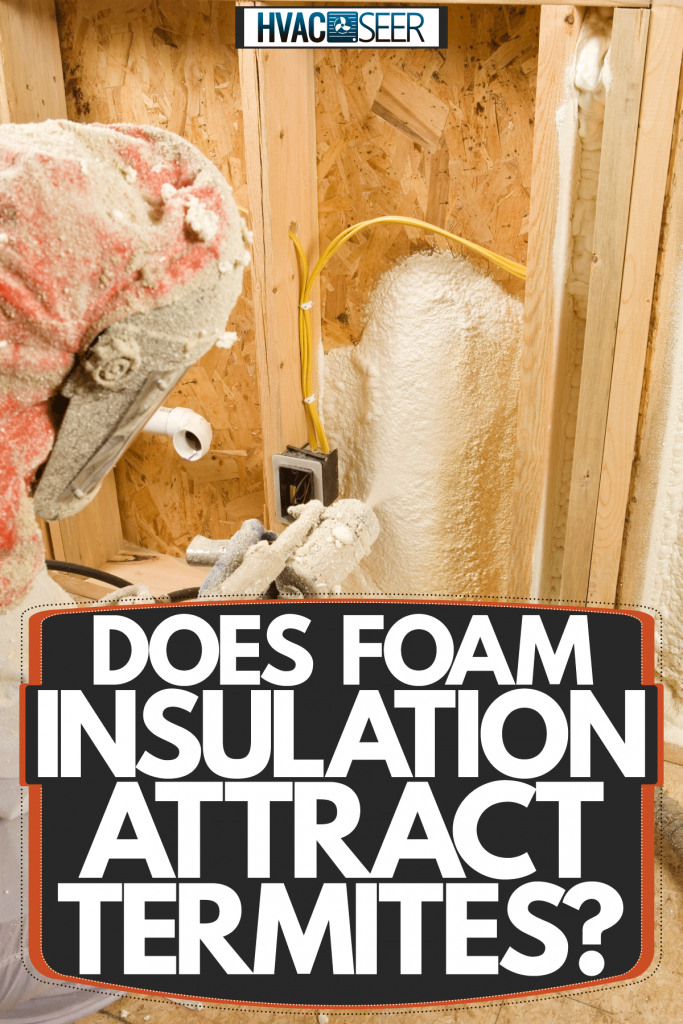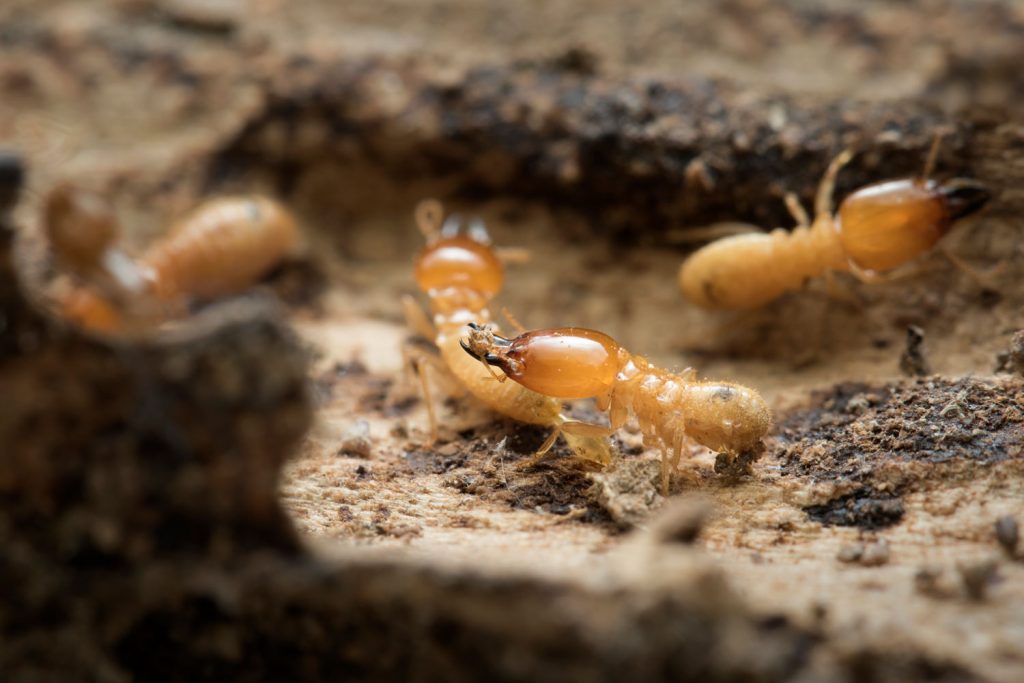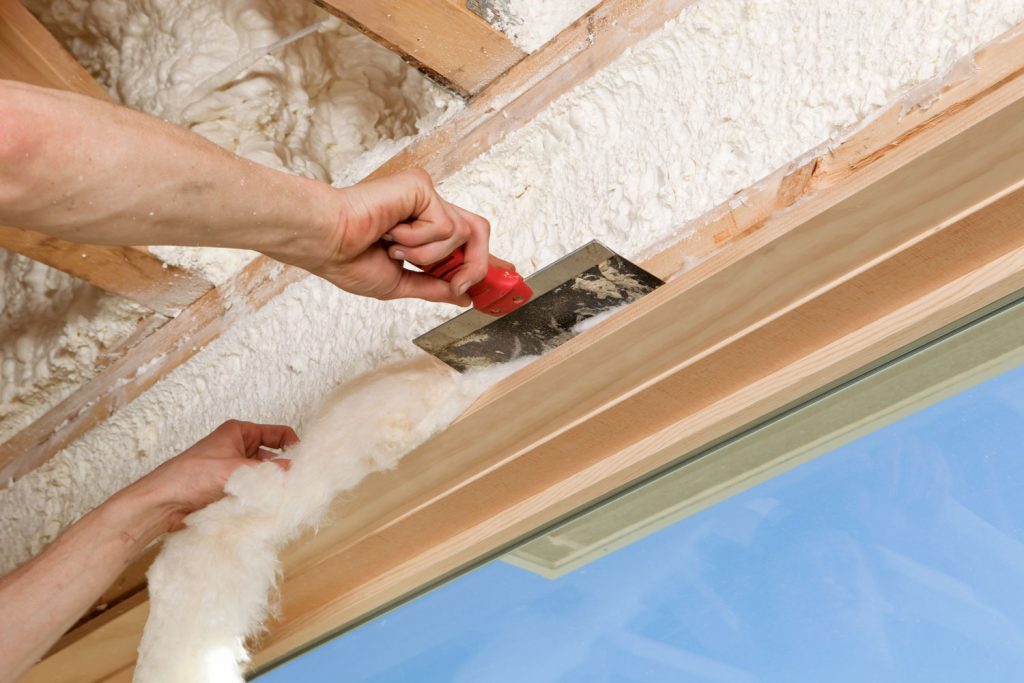Foam insulation is a great choice for lining homes and businesses due to its versatility. Spray foam insulation makes walls sturdier, prevents insects and rodents from living in your subspaces, and provides many other additional benefits as an insulating choice. Even though it can be a greater initial investment, many people choose foam insulation because of its good attributes, but almost every method has certain drawbacks. You may have heard that it attracts some insects like termites, which could cause problems down the road, but is there merit to that assumption? We researched this to find out if that's the case.
Foam insulation does not have any properties that specifically attract or bring out termites. If termites find foam insulation though, it provides a good home for them to build colonies and remain concealed. While it won't cause a termite problem, foam insulation can make an existing small termite infestation into a larger cause for concern.
We have gathered together more information on how termites interact with foam insulation in your home. Read on to learn more about the possible problems and how you can protect your home from insect damage.

A Small Problem
Spray foam insulation provides a plethora of benefits as a home insulating choice. It was developed in the 1940s and started to be used in home consecution in the 1970s. Some people say that spray foam insulation "attracts" termites, but it doesn't.
The reality is that the foam insulation itself does not attract them, but it does provide a great home for them. Foam Insulation provides a spongy, dense place to borrow into and create their colonies. Termites can dig through foam insulation very easily, so it gives them a perfect place to escape to and hide.
Especially in regions where termites spend a significant amount of time underground, they might find foam insulation even more inviting. Part of the problem is that it can be common practice to have spray foam insulation go right up to the wooden beams in a home.
This causes a plethora of problems. It obstructs pest control contractors from property inspecting beams to check for termite damage. If the foam is up against the wood, it also provides termites with a clear route from the wood to their colonies within the foam.
Unfortunately, foam insulation's properties provide termite colonies with everything they need to thrive. The solid structure prevents them from being easily discovered by predators. The insulation provided keeps a consistent temperature which they need. Foam insulation also retains moisture, which is one of the integral parts of a termite's environment.
Once they have discovered a portion of insulation to call home, there is hardly a reason for termites to leave. It's best to prevent the problem before it happens, or at least spot it early and begin remediation.
Will Termites Eat Through Foam Insulation?

Termites do not eat the foam insulation they travel in, but instead, they dig through it. Termites are concerned with cellulose. Wood happens to be made of high amounts of cellulose, and so it is the prime target in most homes.
Insulation does not contain cellulose, so they just cut through it to create tunnels and rooms for their colonies. The myth that termites are attracted to foam insulation itself probably originated because they are often found in it when there is an existing problem.
Foam is not the only effective type of insulation; you can read our article here to learn about some more options, "9 Types Of Thermal Insulation You Should Know".
How Do You Protect Foam Insulation From Termites?
There are a few ways to help protect foam insulation, especially when it is sub-grade or located underground. One way is to use insect nets that cover the insulation. The fine mesh prevents insects like termites from penetrating the surface and burrowing into the insulation.
Another method is to buy foam insulation that has termite protection built into the formula. This is the simplest way, but it may be more costly. Not many manufacturers produce foam insulation that repels insects, so bug netting is still the most common method.
Where Should You Not Use Spray Foam Insulation?
It may be best not to use foam insulation below ground level. This would provide them with a direct path through the ground directly into the wood structure of the home. This problem would be compounded by spray foam expanding in a compressed or tight spot.
In these situations, you should opt for injection foam rather than spray. One of the good things about foam insulation is that there are many methods of installation. You can choose from foam injection, foam spray, and foam boards for whatever suits the project best.
Another place many contractors agree you should avoid using spray insulation is near electrical panels or outlets. If you misapply the foam, it can expand into electrical equipment and make it malfunction. You could also prevent access to important electrical components.
Spray foam is also a debatable choice when insulation a possibly moist area as it can hold onto wetness and cause mold problems. For more information on whether you need a vapor barrier when installing foam insulation, you can find out by reading our article, "Does Foam Insulation Need A Vapor Barrier?"
What If I Have Termites In My Foam Insulation?
Generally, if you have a termite problem found in your home's insulation, there is no way to remediate or clean it out. At that point, you would likely have to remove the affected insulation and the surrounding area to make sure there are no hidden colonies.
This can be a costly procedure because some portions of the wall may need to be removed to get to the insulation. If termites have made colonies in foam insulation, then it is likely they've been able to cause even more damage to the wood framing on the house. It is best to tackle a remediation project as soon as you spot a problem to avoid ramping up the cost.
A Preventable Problem

The benefits of spray and foam board insulations are good enough that they may still make for the best choice despite the problems with termites. If you prepare properly for the conditions that the insulation will be in, termite infestations are avoidable.
Since foam insulation doesn't actively attract insects, if you use specially created termite-resistant foam insulation or bug nets, your project should remain unscathed. You'll be able to maintain your living space both efficiently insulated and insect damage-free if you follow these guidelines!
